- Home
- L'amour, Louis
Taggart (1959) Page 3
Taggart (1959) Read online
Page 3
It was not the trail he had been planning to take, but it was one even less likely to be discovered. Without doubt it led to the top of the plateau.
Following this trail into a notch in the Sierra Anchas, he drew up in the shade of a massive cliff, and turning in the saddle he glanced back along the way he had come.
Wind moved stealthily among the piiions on the mountain near him, breathing cool and fragrant across his heat-baked cheeks, and behind him the land lay vast and empty under the blazing sun. The Tonto Creek valley, the Mazatal Mountains riding beyond it.
Nothing …
The land lay vast, red-brown-pink. Sand-colored mountains splashed with the green of juniper. Here and there were shadows of clouds, and occasional shadows in the lee of cliffs, but otherwise it was a red-brown-pink monotony.
Something … there was something. Very distant, very faint, there was dust. A stirring of dust that was not a dustdevil, but someone, somebody coming.
So they were still behind him. They were still coming.
Chapter Three.
The sky was faintly gray when Miriam Stark climbed the thread of trail to the top of Rockinstraw Mountain, a single rose-tinted cloud above the horizon giving only a suggestion of the glory to come with sunrise. Yet there was enough light to see the web of faint trails, each leading to some vantage point from which the country could be observed.
She loved this place, for even on the hottest day there was a faint stirring of wind, and always there was silence, an unbelievable silence that left the mind free to wander without interruption.
Taking her station behind a juniper, Miriam began the methodical search of the terrain, using the system taught her by Adam. First a quick, sharp survey of the area closest to the mountain, in case somebody had approached during the darker hours, and then the eyes lifted to the farthest horizon and searched with infinite care every canyon, every possible route, every place where men might camp or hide.
She knew what to look for. Any movement, any chance in the pattern of shadows, any flickering, any alteration of any kind at all in the familiar terrain. She had learned to distinguish smoke from dust, and to tell after a brief glance whether dust was caused by a dustdevil, a flurry of wind, or the passage of mounted men … or man.
This study of the terrain, this careful search for any traveler, this continual awareness was not a matter of diversion, but was a matter of life and death. They existed here in a precarious situation, and a careless movement, a careless track, or a chance sighting by some Apache or drifting white man could mean the end of everything; it could even mean death.
Twice each day one or the other of them came to this place and studied the country around. As there were only three of them, there was no way they could continually keep one person on lookout, and the study of the country at dawn and sunset represented the closest alternative.
Rough as the country was, by now they knew it well. Due south and north were the areas of greatest danger. There were canyons and arroyos and considerable cover, but long ago, when they first arrived, each of them had ridden these canyons, studied them, and knew where the cover was to be found.
On the west the only danger lay in the openings between the mesas, for no one would come across the tops. On this side the descent was gradual, but on the far side they fell steeply away to Pinal Creek.
This morning, after a brief survey, Miriam directed all her attention to the north.
Two creeks entered the Salt River from the north in this vicinity-Coon Creek and Cherry Creek. Her view up the basin of each was nearly perfect, but only a tenderfoot would chance coming along such a route.
Red arrows shot sunlight into the heavens, and the ridges to the east were crowned with gold and rose. Crushing some cedar foliage in her hands, she sniffed their aromatic smell. Nowhere in all that vast expanse did anything move … the air was astonishingly clear, and from where she stood she could see miles upon miles.
When first she saw the speck she did not believe it was a man … yet intuitively she knew it must be. A moment before the speck had not been there, and then it was, and now … it was gone!
Only for an instant had something been visible there, some moving thing upon the bare slope of Black Mesa, just beyond Salt River. There had only been the one speck, so if it was a man it seemed almost certain that it was a white man.
Curious and puzzled, she directed her glass toward the area and inspected it with care, but it was beyond the practical range of the glass and she detected nothing more. Yet something had been there, and now it was gone.
If it had been a man he had chosen a way never traveled, but one that would allow him a good view of his back trail and the surrounding country. From below he would not be visible, and it was unlikely anybody would be above him, for due to the conformation of the mesa, going higher would be pure waste of time.
She left her position and worked her way around the top of the mountain, studying the country in every direction. Their lives depended on remaining unknown to the Apaches who occasionally passed through, and so far they had been secure.
Adam came up the mountain and met her at the first position. “See anything?”
“A rider, I think.” She indicated the bare spot on the shoulder of Black Mesa. “Can he get down to the river from there?” Adam took the glasses and studied the place.
“I killed a deer over there the first week we were here. Yes, he can come down, all right.”
He studied the area again. “No sign of anyone now.” “There won’t be. I have a feeling he doesn’t wish to be seen.”
He made a slow search of the country. “Connie doesn’t like it here,” he commented suddenly. “I don’t blame her, exactly.” “She’s had enough, I think,” Miriam responded.
“She had it before we did, you know. She grew up with it.”
“Is she afraid?”
Miriam considered the question. “Aren’t we all? I think she is less afraid than we are. She’s a strong woman.”
“I know … and she believes I’m weak.” “You love her, don’t you?”
“As I never loved anyone.” He lowered the glasses. “There is somebody over there.”
He handed her the glasses. “See? On the cliff above the river?”
“I see him. He’s looking for a way down.”
They were silent as Adam took back the glasses and watched the far-off figure.
“Yes, I love her,” he said after a moment. “I loved her from the first day we met, and I believed she would come to love me.” “I think she does.” As she spoke, Miriam was surprised to realize she really believed it. “I don’t believe she knows that she loves you, or how much, but she doesn’t believe you are strong. “
“I know.”
“He’s found a way,” Miriam said, watching through the glasses. “He’s coming down.”
Adam took the glasses when she offered them and studied the distant figure of the man on horseback. “One man alone in this country … it doesn’t look right.”
“He could be an outlaw.”
Adam continued to watch the rider. “When we’ve gold enough we’ll go out,” he said.
“I know the ranch I want, and once I have it we can go to San Francisco or even back east. After that I think Connie will feel different … and I’m planning a real house, something she can be proud of.”
He passed the glasses to his sister. “He’s across … he’s disappeared in the brush on this side.”
He caught her shoulder. “Look! West of him … see the dust?”
She shifted the glasses to study the dust cloud, and saw a war party of perhaps a dozen Apaches, traveling in the same direction as the strange rider, but some distance from him.
There was no way they could warn him without revealing their position. And Consuelo was alone at the house. “Apaches,” she said.
He got to his feet. “Let’s get back before they cut us off.” They snatched their rifles and almost ran down the steep trail. At the c
anyon they could defend themselves, but caught out like this they would be killed in a matter of minutes if they were seen, and alone in the canyon Consuelo could do little. The lone rider must shift for himself.
Swante Taggart,rode down off the mesa and into the water. At this point it was scarcely knee-deep for the horse, and a few minutes later Swante rode up the bank and into the willows along the river.
Dismounting there under cover of the brush, he trailed his reins and walked back to the edge of the water. With a clump of sage he brushed out his tracks and sifted dry sand over them until all evidence of his crossing had been eliminated. On the other side of the river he had been riding across shelving rock.
He worked his way through the brush, leading his horse, and paused in the outer edge and with his field glasses studied the mountains ahead of him. Only a few minutes earlier Adam and Miriam Stark had fled down the trail, but he was too late to have seen them there, and their route led down a deep, water-worn cut.
Still leading the steeldust, he went up an arroyo. Suddenly he felt the horse’s head come up and saw his ears prick. “Easy, boy!” he whispered. “Easy, now.”
The gelding turned slightly toward him, but the ears remained pricked, listening.
And then Swante Taggart heard the sound himself, a click of a hoof on stone.
Drawing the horse back under the slight overhang, he waited, rifle in hand.
The shadow of a riding Indian appeared on the far wall, then another, then several.
One hand on the nose of the steeldust, Swante waited, his heart pounding heavily.
Sweat trickled down his cheeks, and inside he was cold and still. A pebble fell near him, then a trickle of sand. Letting go the gelding’s nose, he lifted his rifle.
He could hear the low mutter of their voices, for they were scarcely fifteen feet above him. They argued briefly, and then moved off along the edge of the arroyo, and he knew enough of their language to know they were looking for something. But what? Who?
He squatted on his heels against the wall, the rifle across his knees. It was growing hot.
His canteen was full, but he knew that neither the horse nor himself could go on as they had … they must find a place and hole up for a rest. Also, Shoyer must still be on the trail, and the reason was obvious, for there were only two places he might be going … to Globe or to Morenci.
The thing to do was to stop. If a man left no tracks none could be found, and Pete Shoyer would go on to Globe, then to Morenci, looking for him.
It was a risky thing to try, and he would need food, which meant either trapping or shooting game, and shooting was likely to attract Apaches. He must find a place with water for himself and grass for the gelding.
When half an hour had gone by he rolled and lighted a cigarette to still the gnawing of hunger. Hunger, however, was not new to him, and he was not a man who pampered himself.
When a full hour had passed he climbed to the rim of the arroyo and sat among the rocks to study the country. There should be springs somewhere around the mountain to the east, which was Rockinstraw, for run-off water had a way of coming to the surface. Any spring would be a danger, for the Apaches were almost sure to know of it and visit it from time to time.
As he started to rise, a rabbit jumped up and he seized a rock … the rabbit was gone. Probably couldn’t have hit it, anyway. He had never been much good at throwing things … except lead once in a while.
The Apaches had gone off to the south. His own way led to the east, so he mounted and started on.
Desert though it was, the country was brushy. There was prickly pear, pin oak, and a variety of desert growth, so that a man riding slowly to raise no dust, and taking advantage of the brush and juniper, could keep under cover at least half the time.
With Rockinstraw Mountain looming ahead of him, he worked his way slowly across country, stopping frequently, constantly aware of danger from Apaches, but equally ready to observe the slight touch of green that might mean a spring or small seep.
Ahead of him in a canyon bottom was a heavy stand of brush, and pushing up to it, he noticed that some of the brush was dead. He paused, studying the situation. What it was that first arrested his attention he did not know, and anyone riding less cautiously than he would have noticed nothing, but something about the area disturbed him.
The patch of thick brush lay in the shallow opening of the canyon, and Taggart skirted the brush warily, trying to decide what it was that bothered him. Dismounting, he walked into the brush leading his horse. Glancing from time to time at the steeldust, he noticed nothing. If there was anything alive around, the horse was as unaware of it as he himself.
His eye caught the abrasion before his attention came to a focus on it. He had taken a step past when he suddenly became aware of what he had seen, and turning back he looked again.
The trunk of a twisted mesquite tree had been bruised by some heavy object. Nor was the bruise in such a place that it might have been caused by a horse’s hoof … the abrasion was higher, but not fresh. He studied it, knowing that his life now hung precariously and any slight mistake could mean its end.
Squatting, he turned his head and looked around, and so it was that he saw the wheel.
It was a wagon wheel, almost entirely concealed in brush, but beyond it there was another wheel. Ducking under the brush, crawling on his knees, he reached the wagon.
A wagon concealed in such a manner meant that whoever concealed it meant to find it again, but intended that it should not be found by anyone else. How anybody had gotten a wagon this far was more than he could conceive, yet the wagon was here.
The presence of a wagon must mean the presence of men. He studied the bottom of the wagon as much as he could in the concealing brush. There were some threads that must have come from burlap sacking … and caught on a sliver of the wagon-board was a cotten thread. He scowled … from a woman’s skirt? It seemed ridiculous, and yet …
The tracks had been wiped out, but not by one skilled in tracking. Searching, he found a partial hoof-print under the edge of a bush … the wagon had been drawn by mules.
Returning to the steeldust, he lighted another smoke and considered the situation.
Whoever had brought the wagon this far could have taken it farther; hence it was logical to suppose that the driver had reached his destination, or close to it.
Had the wagon been abandoned because his animals had been killed, at least a skeleton would have remained.
What would a man be doing in this country? Cattle were impractical with the Apaches on the loose, although here and there a few were trying it. But he had seen no cattle, nor any signs of them.
Mining? That might explain the wagon, brought in to carry supplies and equipment.
Why not bring it in on mules? Or horses? But if the man did have a woman along, he might prefer a wagon, or if he were bringing a large amount of supplies, planning a long stay.
For one man alone or even a half-dozen men to remain in this country during Apache trouble meant a secure position, well-fortified, well-supplied.
Of course, it was always possible the wagon had been so cumbersome they had decided to abandon it, but then the wagon would most likely have been left in the open, wherever the driver had stopped. There was no reason to conceal the wagon unless the owner was expecting to remain nearby, and expecting to use it again.
The dryness of the cut brush indicated that the wagon had been left there something around a month ago, and if the driver of that wagon was not dead, he must be somewhere within a radius of three or four miles, and the chances were it would be less.
Where one man stopped another could. That man would need water, grass, a place of hiding or defense. It would be a place, more than likely, where a man could hole up for a while.
While the steeldust cropped at the mesquite brush, Swante Taggart continued to study the situation, remembering the terrain he had examined so carefully. He had expected there would be springs near Rockinstraw, a
nd it must be near one of these that the man had located.
At present Taggart was hidden from observation and his horse was contented with the brush. Taking his rifle, canteen, and field glasses, he found a way to the top of the bank and lay down among the rocks and brush.
It was very hot … no sound disturbed the clear air. The smells of hot, dry grass and mesquite came to him. Shielding the field glasses with his sombrero so they would not reflect sunlight, he began a careful study of the country ahead of him. But after some time he had found nothing-no clue, no sign of anything, any object that did not belong, no evidence of a trail anywhere, nothing to indicate the presence of human beings.
Returning to the brush, he loosened the saddle girth and picketed the gelding. Then he stretched out in the shade and slept.
No more than an hour had passed when he opened his eyes. Near him the horse dozed.
He got to his feet and, taking the glasses, went back to his former position and began a new study of the country, realizing that a change in the position of the sun would often change the looks of an area in a decided manner.
He should search, but he did not like the idea of leaving tracks around that might be seen by either Apaches or Pete Shoyer.
More and more his attention was drawn back to Rockinstraw. The mountain loomed above everything in a country that was almighty broken up. From its peak a man could get quite a view, but he could also get himself shot at.
By now it was late afternoon. Within an hour or two, if anyone was around they would be preparing something to eat, and that meant a fire, and a fire meant smoke. Very little smoke if the fellow used dry wood, but smoke just the same. And smoke could be smelled and seen.
Swante Taggart rolled a cigarette and lit up. He would wait … he was sure he was right. Somebody was hidden close by, and a hiding place that good would be good for him also.
He would wait.
Chapter Four.
The Spanish fathers who had located the canyon of the lost mine had mistaken float for an outcropping, and without doubt there had been a lot of the float, and some large boulders included. Few of the padres had any knowledge of mining or of the occurrence of ores, and what they found had apparently been broken off from high up on the mountain, from which point it had rolled or floated down and wedged among other rocks. Later, though realizing their mistake, they had failed to discover the true source of the gold.

 Last Stand at Papago Wells (1957)
Last Stand at Papago Wells (1957) the Trail to Crazy Man (1986)
the Trail to Crazy Man (1986) Shalako (1962)
Shalako (1962)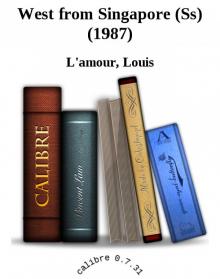 West from Singapore (Ss) (1987)
West from Singapore (Ss) (1987) Last Of the Breed (1986)
Last Of the Breed (1986) Dark Canyon (1963)
Dark Canyon (1963)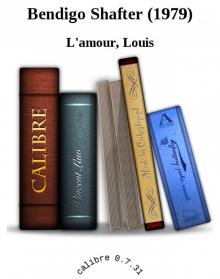 Bendigo Shafter (1979)
Bendigo Shafter (1979) Riding for the Brand (Ss) (1986)
Riding for the Brand (Ss) (1986) Guns Of the Timberlands (1955)
Guns Of the Timberlands (1955) the Iron Marshall (1979)
the Iron Marshall (1979) the Broken Gun (1967)
the Broken Gun (1967)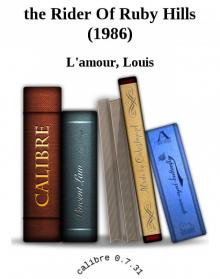 the Rider Of Ruby Hills (1986)
the Rider Of Ruby Hills (1986)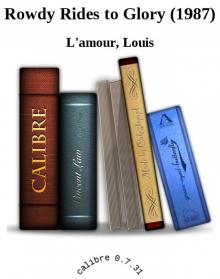 Rowdy Rides to Glory (1987)
Rowdy Rides to Glory (1987) the First Fast Draw (1959)
the First Fast Draw (1959) Utah Blain (1984)
Utah Blain (1984)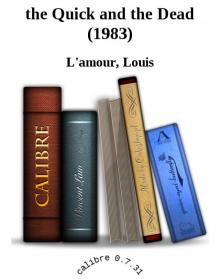 the Quick and the Dead (1983)
the Quick and the Dead (1983) Tucker (1971)
Tucker (1971)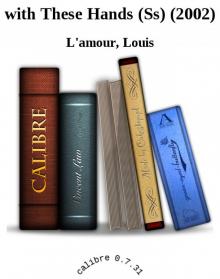 with These Hands (Ss) (2002)
with These Hands (Ss) (2002) May There Be a Road (Ss) (2001)
May There Be a Road (Ss) (2001) Night Over the Solomons (Ss) (1986)
Night Over the Solomons (Ss) (1986) the Haunted Mesa (1987)
the Haunted Mesa (1987) Matagorda (1967)
Matagorda (1967) End Of the Drive (Ss) (1997)
End Of the Drive (Ss) (1997) Riders Of the Dawn (1980)
Riders Of the Dawn (1980) the Key-Lock Man (1965)
the Key-Lock Man (1965) Taggart (1959)
Taggart (1959)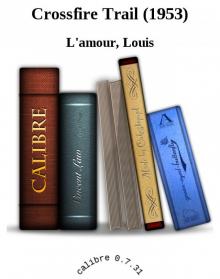 Crossfire Trail (1953)
Crossfire Trail (1953) Education Of a Wandering Man (1990)
Education Of a Wandering Man (1990) the Proving Trail (1979)
the Proving Trail (1979) Kilrone (1966)
Kilrone (1966) the Man from Skibbereen (1973)
the Man from Skibbereen (1973) the Tall Stranger (1982)
the Tall Stranger (1982) Bowdrie (Ss) (1983)
Bowdrie (Ss) (1983) Catlow (1963)
Catlow (1963)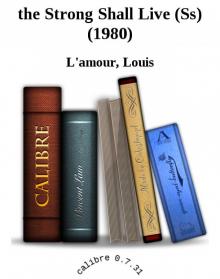 the Strong Shall Live (Ss) (1980)
the Strong Shall Live (Ss) (1980) Fallon (1963)
Fallon (1963) the Empty Land (1969)
the Empty Land (1969) the Cherokee Trail (1982)
the Cherokee Trail (1982) Beyond the Great Snow Mountains (Ss) (1999)
Beyond the Great Snow Mountains (Ss) (1999) Kid Rodelo (1966)
Kid Rodelo (1966)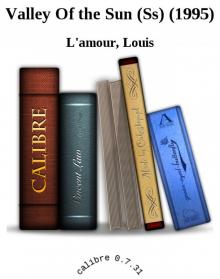 Valley Of the Sun (Ss) (1995)
Valley Of the Sun (Ss) (1995) Radigan (1958)
Radigan (1958) Law Of the Desert Born (Ss) (1984)
Law Of the Desert Born (Ss) (1984) Chancy (1968)
Chancy (1968) the Burning Hills (1956)
the Burning Hills (1956) Son Of a Wanted Man (1984)
Son Of a Wanted Man (1984) Killoe (1962)
Killoe (1962) Showdown On the Hogback (1991)
Showdown On the Hogback (1991) the Shadow Riders (1982)
the Shadow Riders (1982) to Tame a Land (1955)
to Tame a Land (1955) Brionne (1968)
Brionne (1968) Off the Mangrove Coast (Ss) (2000)
Off the Mangrove Coast (Ss) (2000) Showdown at Yellow Butte (1983)
Showdown at Yellow Butte (1983) How the West Was Won (1963)
How the West Was Won (1963)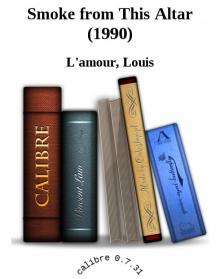 Smoke from This Altar (1990)
Smoke from This Altar (1990) Comstock Lode (1981)
Comstock Lode (1981) Flint (1960)
Flint (1960) Hondo (1953)
Hondo (1953) Reilly's Luck (1970)
Reilly's Luck (1970) No Trouble for the Cactus Kid
No Trouble for the Cactus Kid Bowdrie's Law (Ss) (1983)
Bowdrie's Law (Ss) (1983)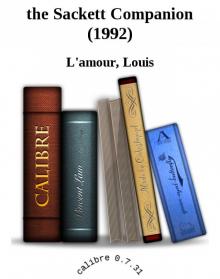 the Sackett Companion (1992)
the Sackett Companion (1992) the Man Called Noon (1970)
the Man Called Noon (1970) Buckskin Run (Ss) (1981)
Buckskin Run (Ss) (1981) Down the Long Hills (1968)
Down the Long Hills (1968) Kiowa Trail (1964)
Kiowa Trail (1964) Long Ride Home (Ss) (1989)
Long Ride Home (Ss) (1989) Lonigan (Ss) (1988)
Lonigan (Ss) (1988) Dutchmans Flat (Ss) (1986)
Dutchmans Flat (Ss) (1986) Passin' Through (1985)
Passin' Through (1985) the Hills Of Homicide (Ss) (1987)
the Hills Of Homicide (Ss) (1987) Silver Canyon (1956)
Silver Canyon (1956) the Californios (1974)
the Californios (1974) Where the Long Grass Blows (1976)
Where the Long Grass Blows (1976) Callaghen (1972)
Callaghen (1972) Under the Sweetwater Rim (1971)
Under the Sweetwater Rim (1971) the Lonesome Gods (1983)
the Lonesome Gods (1983) Heller with a Gun (1955)
Heller with a Gun (1955)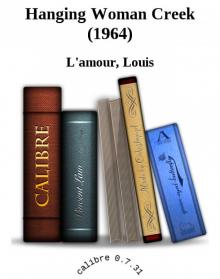 Hanging Woman Creek (1964)
Hanging Woman Creek (1964) High Lonesome (1962)
High Lonesome (1962) There's Always a Trail (1984)
There's Always a Trail (1984) the High Graders (1965)
the High Graders (1965) Conagher (1969)
Conagher (1969) from the Listening Hills (Ss) (2004)
from the Listening Hills (Ss) (2004) Monument Rock (Ss) (1998)
Monument Rock (Ss) (1998)